Ancient and Modern Britons. pg 44.
“MOOR, noun [Gr. dark, obscure.] A native of the northern coast of Africa, called by the Romans from the color of the people, Mauritania, the country of dark-complexioned people. The same country is now called Morocco, Tunis, Algiers, etc”
“SWARTH’Y, adjective. Being of a dark hue or dusky complexion; tawny. In warm climates, the complexion of men is universally swarthy or black. The Moors, Spaniards and Italians are more swarthy than the French, Germans and English.
1. Black; as the swarthy African”

18th century Moor statue in the House of the Black Heads, Riga. By Diana Petterson, 2022.

A close up of the exterior iconography of the House of the Black Heads in Old Town Riga's Town Hall Square featuring the Brotherhood of the Black Head's patron, Saint Maurice. By Diana Petterson, 2022.

A black female lamppost in the House of Black Heads, Riga. By Diana Petterson, 2022.

Two 18th century Moorish sculptures in the House of Black Heads, Riga. By Diana Petterson, 2022.

Close up of the Coat of Arms of the Brotherhood of Blackheads. It shows the face of a Black man, a sword and a cross inside of a shield representing the patron of the brotherhood, Saint Maurice. By Diana Petterson, 2022.

Chair with the Coat of Arms in the Assembly Room of the House of the Black Heads in Riga. By Diana Petterson, 2022.

Coat of Arms of the Agas family.

Coat of Arms of the Andrewes family.

Coat of Arms of the Annesley family.

Coat of Arms of the Ashford family.

A close-up of “The Apotheosis of Saint Maurice,” painted ceiling in the Assembly Hall inside the House of the Black Heads in Riga. The painting depicts Saint Maurice clad in a suit of armor. An angel has removed his helmet and a lady in blue is handing Maurice a laurel garland, which symbolizes his ascension to the realm of the divine. Right next to him is his coat of arms, the one created for use by the Brotherhood of the Black Heads. By Diana Petterson, 2022.

A close-up of the Black Heads Coat of Arms on the painted ceiling of the Assembly Hall inside of the House of the Black Heads in Riga. The Coat of Arms, a cross, sword and the head of a black man, was created by the Brotherhood of the Black Heads to represent their patron, Saint Maurice. By Diana Petterson, 2022.

A close-up of these two unidentified wall sculptures in the Historical Cellars of the House of the Black Heads in Riga. By Diana Petterson, 2022.

House of the Black Heads in Old Town Riga's Town Hall Square featuring the Brotherhood of the Black Head's patron, Saint Maurice. By Diana Petterson, 2022.

A Moorish horseman facing the left, standing and seated Turks in the middle ground, and other horsemen in the background, from 'Figures on Horseback' (Cavaliers nègres, polonais et hongrois) Stefano della Bella, ca. 1651

Moorish Guard by Edwin Lord Weeks, ca. 1878

Coat of Arms of Pope Benedict XVI featuring the "Moor's head".

Coat of Arms of the House of Dürer.

Coat of Arms of the Berthwick family.

Coat of Arms of the Blackmore family.

Painting fragment identified as "Balthazar, the Moorish King", a figure from an "Adoration of the Kings" scene. Attributed to Joos van Cleve, 1600s.
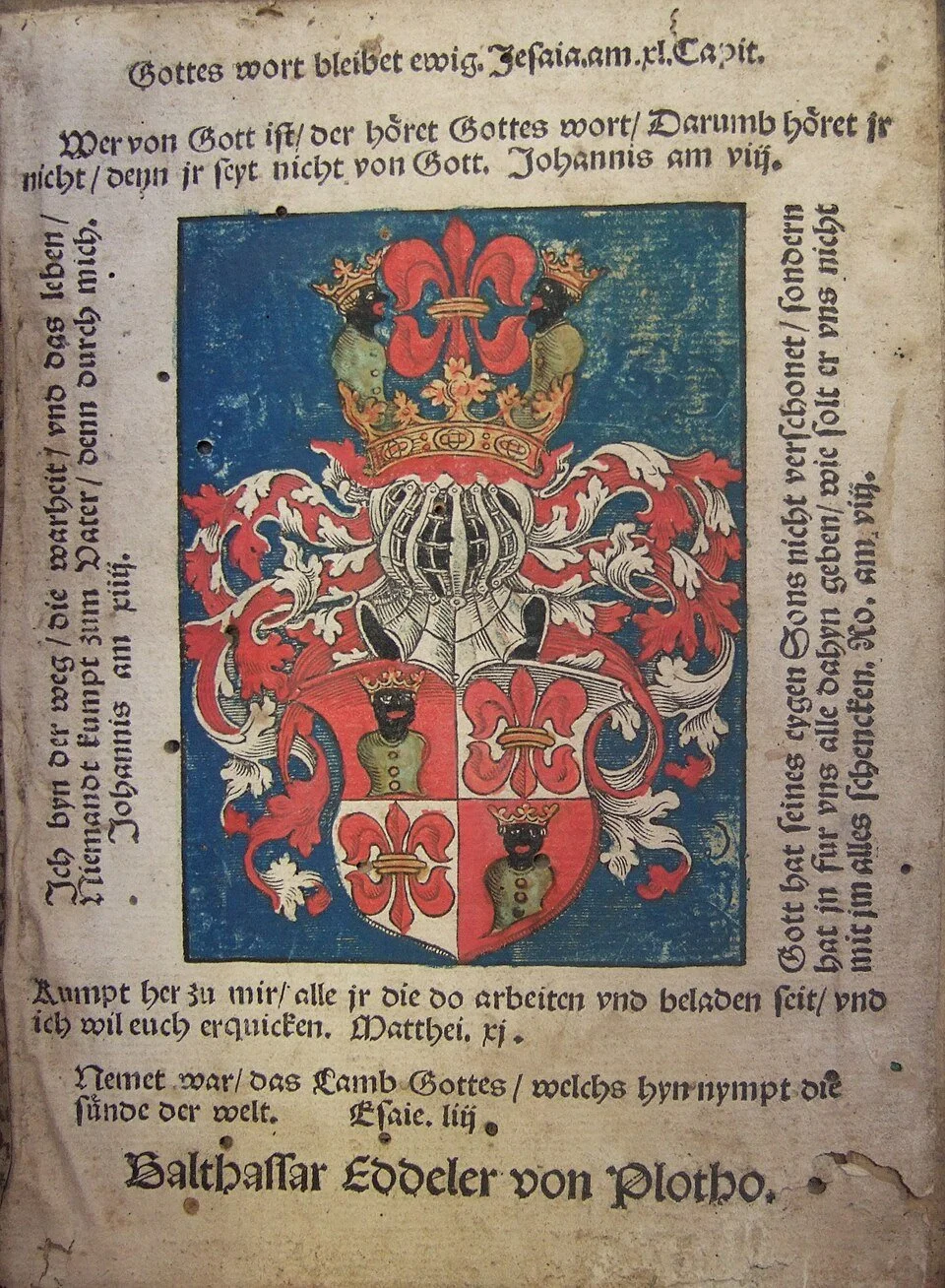
the ex libris (bookplate) of Balthasar Edler von Plotho, a nobleman from the early 16th century.

Painting titled Portrait of an African Man (also known as Portrait of a Moor) by Dutch Renaissance painter Jan Mostaert around 1525–1530.
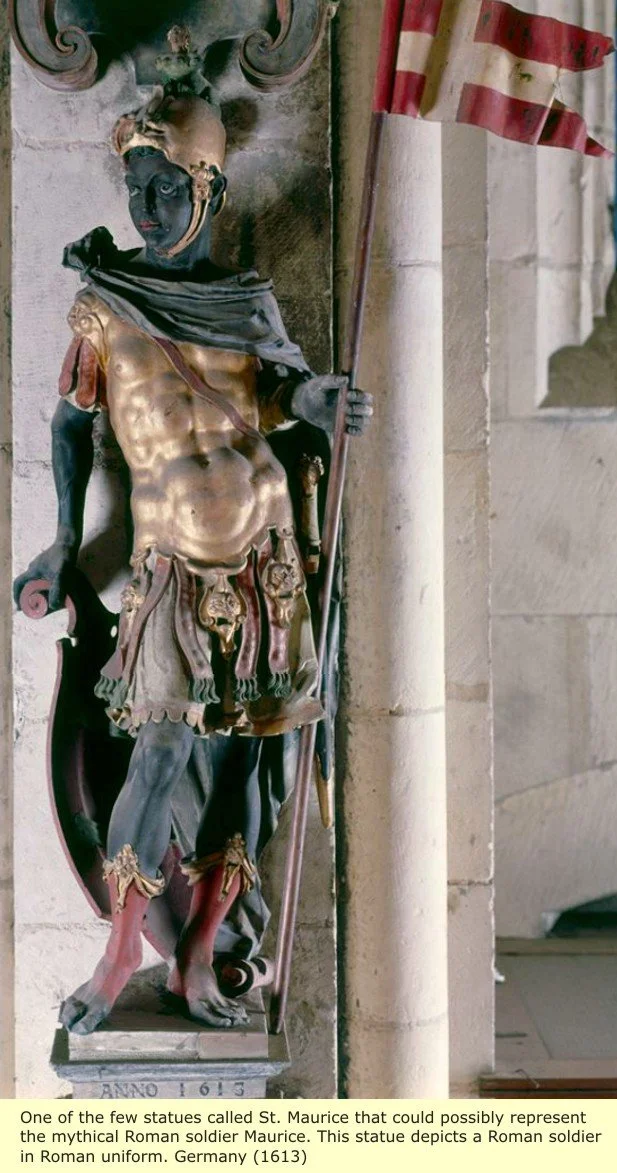
Statue reads '' ANNO 1613'' translated to year 1613.

Unidentified Black Knight of Holy Roman Empire in 800 AD. His flag - of the Holy Roman Empire
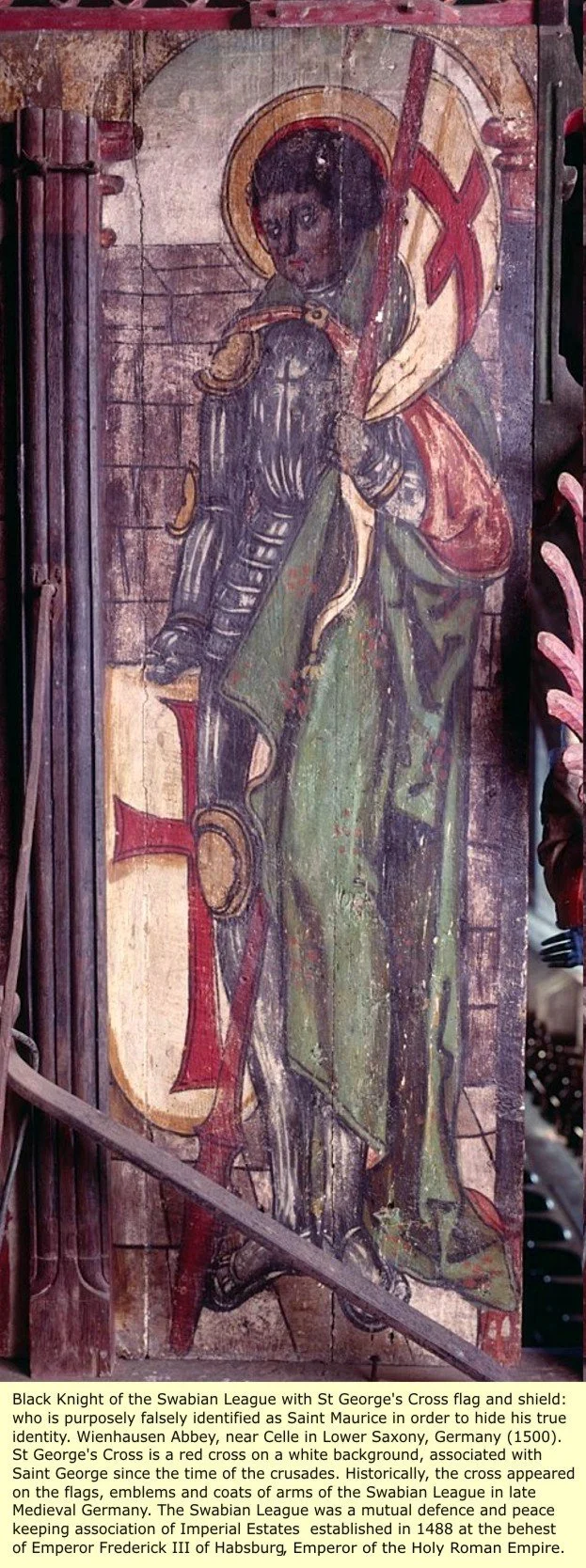

Sir Morien – Black Knight of the Round Table In the image, Sir Morien sports a Bascinet helmet that dates to the 13th Century—right around the time of the Arthurian Romances. “He was all black, even as I tell ye: his head, his body, and his hands were all black, saving only his teeth. His shield and his armour were even those of a Moor, and black as a raven…” - The Saga of Morien.

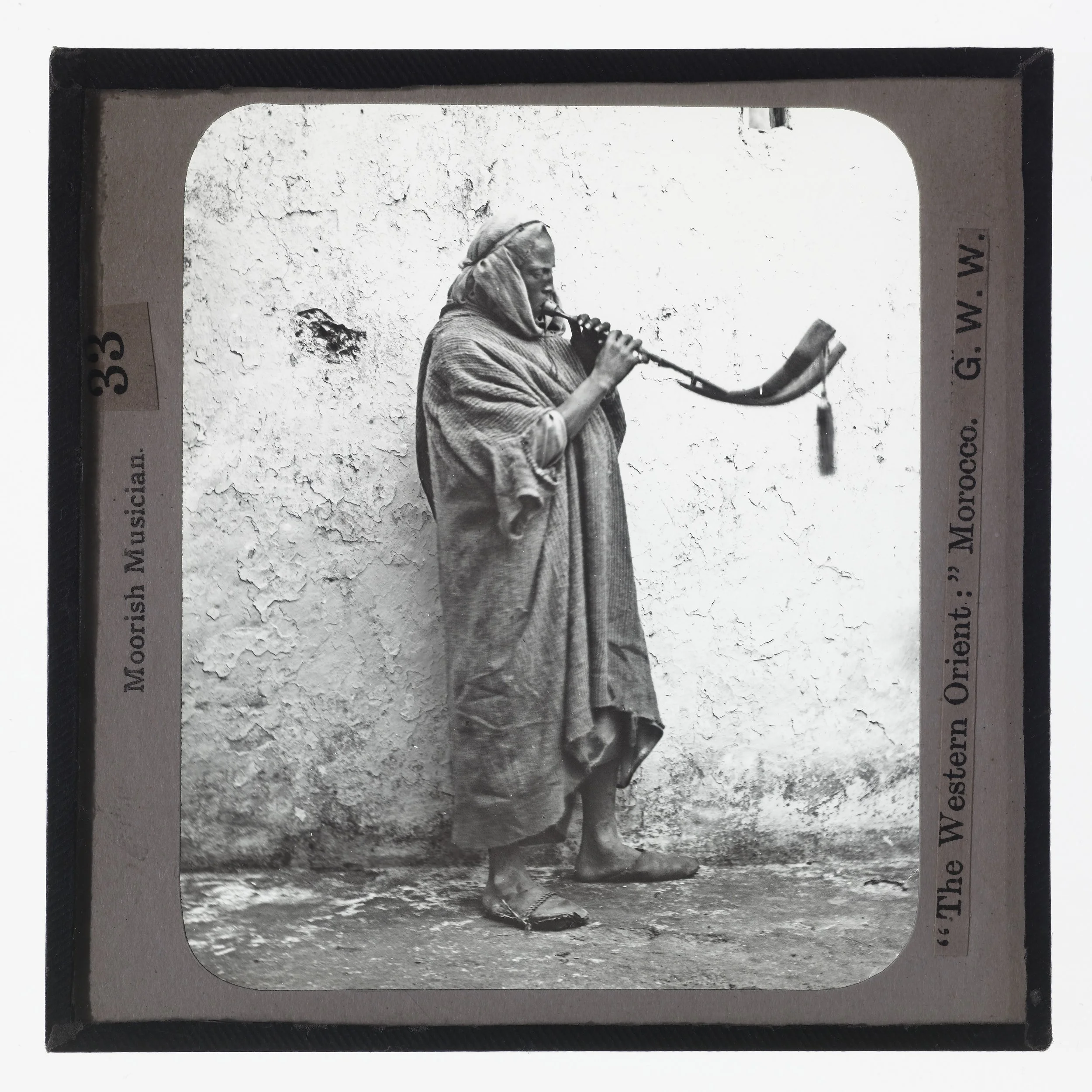
Moorish musician Wilson, G. W. (George Washington), 1823-1893
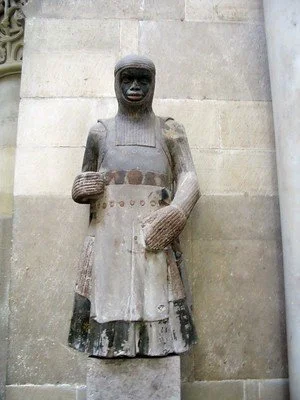
In the Magdeburg Cathedral is the oldest known image depicting Saint Maurice as a Moor ( = Mauritius). The statue is carved around 1250 and shows him as an armoured knight. St.Maurice was a leader of the Theban Legion. Tradition tells, that the complete legion converted to Christianity within the 3rd century - and later got the title "Martyrs of Agaunum".
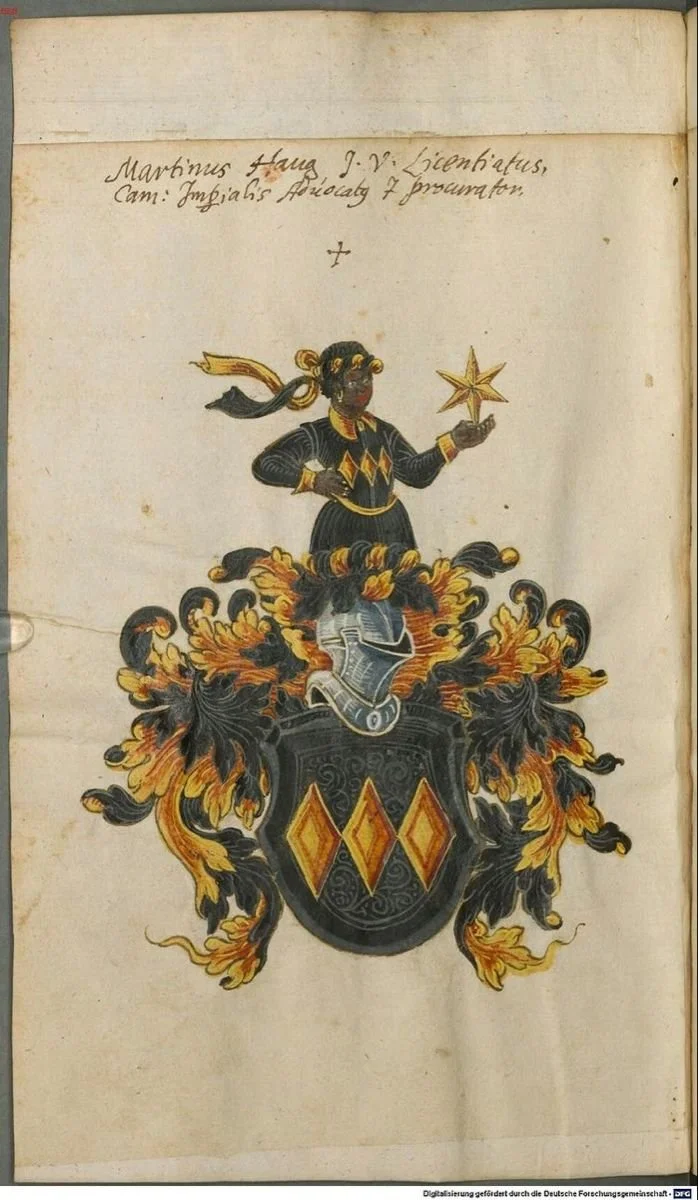
A coat of arms featuring a "Moor's head" as its crest.

“Meeting of Saint Erasmus of Formiae and Saint Maurice” by Matthias Grünewald (1517-1523) These two saints lived in different centuries. The painting was intended to reflect the importance of the two men.

A portrait traditionally believed to be of Abram Petrovich Gannibal (c.1696-1781). According to research by Natalya Teletova, the painting is not of Gannibal: rather, it shows a general Ivan Ivanovich Möller-Sakomelsky (1725-1790). The order he is wearing was created after the death of Abram Gannibal.

Statue of St. Maurice, Magdeburg, Germany, Cathedral of St. Maurice and St. Catherine, choir, ca. 1240-50

In center, black trumpeter John Blanke, at the Westminster Tournament Roll (1511). Image from United Kingdom National Archives.
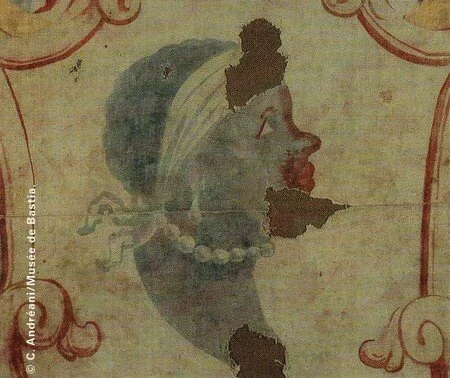
The Corsican flag as it appeared in 1768 before the Battle of Ponte Nuovo. (source: Corse Méditerranée Magazine)
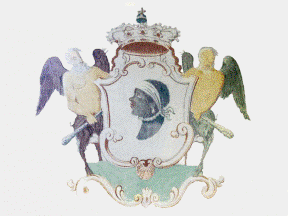
Flag of Corsica - Image by Olivier Touzeau, 5 September 2020. ''This representation fits the traditional description of Moorish slaves captured and traded by Christians, or of Moors who occupied for a long time Spain, the south of Portugal, parts of the Mediterranean shore of France and several Corsican villages. In the latter cases, the so-called Moors were not black Africans but Arabs or Islamized natives from Maghreb.'' ''Berthelot and Ceccaldi, quoting the historian Carpacino, believe the headband was a royal symbol. Therefore, the Moor would be a defeated Moorish chief. However, Antonetti points out that Carpacino mentioned the headband as a royal symbol in the Hellenic world only. The heraldist Paillot mentions a tortil, that is a twisted ribbon, and not a headband. The tortil is tied behind the neck where it constitutes two small pieces. The tortil is placed either on the eyes or the forehead. In the arms dated from the 17th-18th centuries, the Moor's head is consistently shown with pearl necklaces and ear pendants. Therefore this Moor was indeed a Moorish woman, most probably a slave. These female representations might have been inspired by the trade of Moorish slaves, which was ruled during the Renaissance by Genoa, then ruler in Corsica'' .
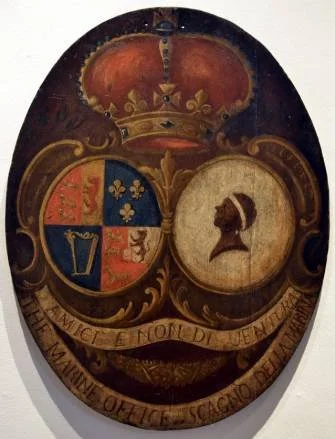
rms of the Anglo-Corsican King (1794-’96) As on the shield of The Marine Office / Scagno di Marina. (Coll. Museum Bastia). The dexter arms are those of King George III and the motto reads: AMICI E NON DI VENTURA
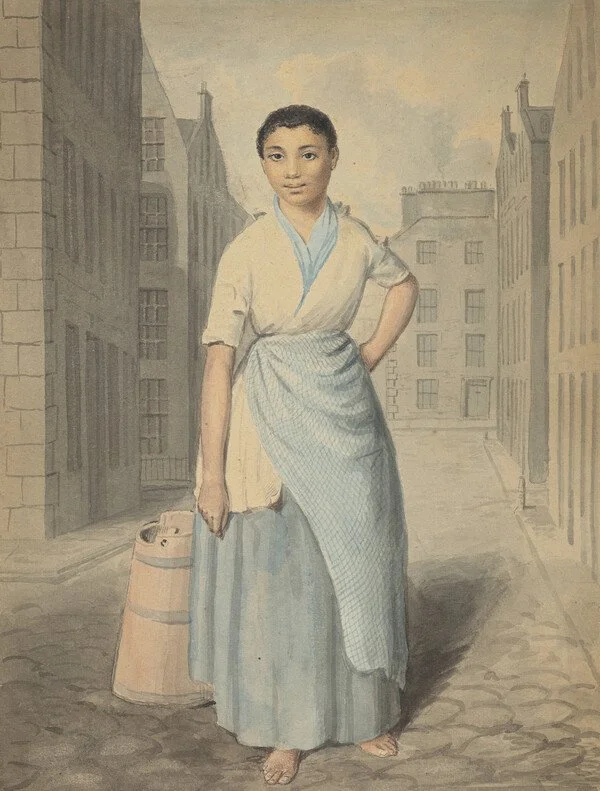
David Allan, Edinburgh Milkmaid With Butter Churn, circa 1780–90 Courtesy of the National Galleries of Scotland
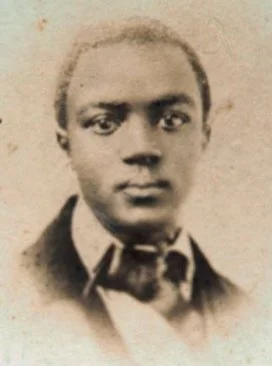
Jesse Ewing Glasgow Jr. Historical Society of Pennsylvania
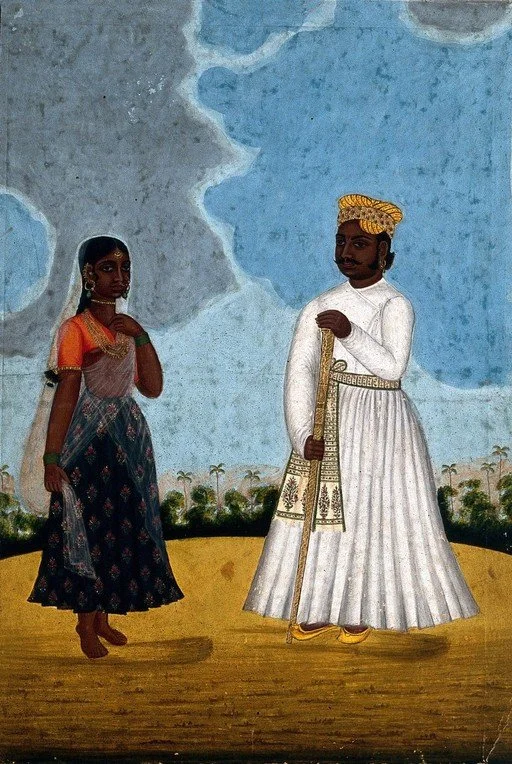
A Moorish man with wife. Gouache drawing. Lettering: A Moor Chobedar and his wife. The Welcome Collection

A historical illustration related to the Schembartlauf, a traditional carnival from 15th and 16th-century Nuremberg, Germany.

Portrait of a Moorish Woman (Paolo Caliari, 1528 - 1588).


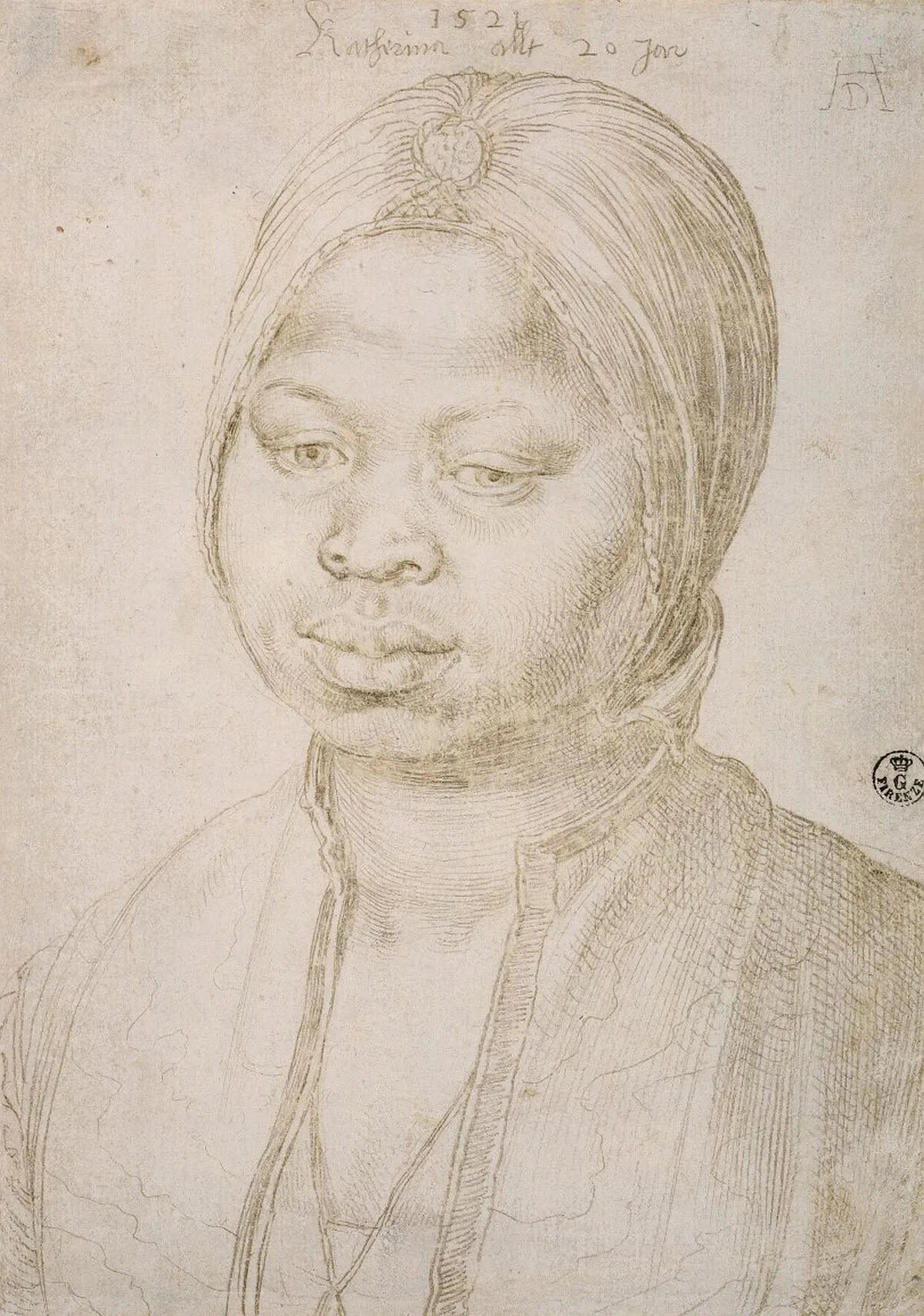
"Portrait of Catherine, the Mulatta of the Portuguese Bradao" by Albrecht Dürer, 1521.

Drawing by Albrecht Dürer titled "Portrait of an African Man", 1508.

Portrait of Angelo Soliman (Mmadi Make, 1721 - 1796) by Johann Gottfried Haid.

Detail from the painting "The Miracle of the Relic of the Cross at the Ponte di Rialto" by the Italian Renaissance artist Vittore Carpaccio, created around 1496.

A 16th-century oil painting by an anonymous Flemish painter, often referred to as "Chafariz d'El-Rey" or "The King's Fountain". It depicts a bustling scene in front of the Chafariz de El-Rei (King's Fountain) in Lisbon, Portugal.

Portrait of Alessandro de Medici "The Moor", the first duke of Florende, by Girolamo Macchietti

The coat of arms of the German city of Zwickau, showing the city's patron saint, Saint Maurice.

The coat of arms of the Hasbrouck family.

A manuscript illumination from around 1283 titled "Muslims playing chess in Spain".

A detail from the medieval German tapestry known as "The Wild Men and the Moors". 1440.

Painting titled "The Moorish Chief" (1878) by Eduard Charlemont.

A photograph titled "A Moorish Lady", depicting an Algerian woman. By A. Chauffeur, 1880s.

Painting titled The African King Caspar (also known simply as King Caspar), painted by the Dutch artist Hendrik Heerschop, 1654.

Detail of a painting titled The Adoration of the Magi by the artist Joos van Cleve. 1525.

Venetian blackmore statue in antique style.

Moorish man and woman in hard-paste porcelain by Jacob Petit, 1840 circa.

An illustration of Sir Morien, the Black Knight of King Arthur's Round Table.

Head of a black man. Mezzotint by A.F. Girard, 1839, after a mezzotint.
